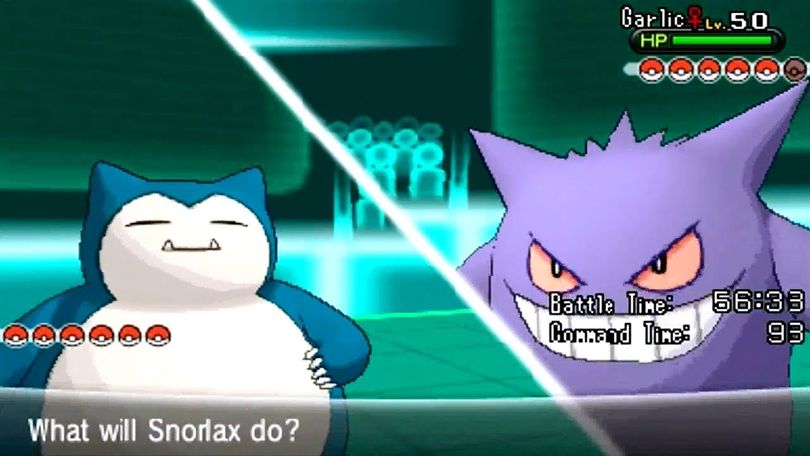Secret Values: Why ‘Pokemon’ isn’t just for kids

On September 5, 2014, my house was robbed. The thief took a multitude of my mother's expensive rings and necklaces, along with my high-end video card, Nintendo 3DS and almost every game in my collection. The perpetrator stole more than $3,000 worth of valuables, mostly in the form of jewelry and electronics. For my mother, the central disappointment was the loss of her wedding ring which she'd planned to gift to one of my sisters years down the line.
For me, the most disheartening loss was my Pokemon.
As pathetic as that might sound, the virtual monsters contained on my cartridge were unique. I knew that the insurance company would reimburse me, but they would never be able to pay me back for the time I'd spent on Pokemon. I'd sunk upwards of 150 hours into my copy of Pokemon Y, with a majority of the time spent crafting my team. The lineup consisted of six Pokemon that I had used in innumerable battles with friends during the months preceding the burglary. They were specially bred, trained, and named, and had brought me thrilling victories and defeats against my acquaintances. The time I put into their creations was time I don't regret.

"But why?" you probably ask. "Why did you spend hours upon hours raising virtual battle pets in a simplistic RPG so obviously designed for young children?" The answer is that, below the childlike aesthetics the series is known for, a deep, strategic meta-game exists -- but only for those gamers willing to seek it out. It's within this inset layer that the Pokemon series' appeal to core gamers resides.
When I say that Pokemon's meta-game exists below the core experience, I mean far below. In fact, Game Freak seems to be doing its very best to ensure that Pokemon players don't uncover this facet of the experience unless it is explicitly shown to them by another player. Fully understanding the Pokemon meta-game takes time and experience, but, on basic terms, it boils down to two elements: effort values (EVs) and individual values (IVs). Don't crack open your DS and go looking for mention of either of these phrases in-game -- you won't find them. The closest you'll get to direct mention of either term is in the form of Super Training (where EVs are referred to as "stat training") and the stats judge (who claims to disclose the "intriguing potential" of your Pokemon, which is in fact their IVs).

However, neither of these in-game systems would mean anything to a player not already familiar with the concepts of EVs and IVs from out-of-game experience. The two terms refer to unseen values assigned to the stats of specific Pokemon.
Every Pokemon starts with zero EVs in each of its six stats, and more EVs are acquired by defeating specific Pokemon opponents in-game. The more EV points a Pokemon has invested in a stat, the greater the raw value of the stat will be -- with the catch being that there's a cap to the amount of EVs that can be invested into a single Pokemon. The significance of EVs to the stat totals of Pokemon means that intelligent EV investment in important stats is vital in order to craft a competitively viable monster. Certain, dauntingly specific EV investments have been calculated by websites like Smogon to protect specific Pokemon from being one-hit-KO'd by frequently-seen moves used by other popular competitive Pokemon.

But EVs are only half of the equation; IVs act as the second major force in determining a Pokemon's competitive viability, and are also separated by the six stats. Since IVs are determined at "birth," the only way to ensure that one's own monsters have high IVs is to breed Pokemon. Special items can be given to parent Pokemon in order to ensure a greater likelihood of passing down high IVs. Eventually, it's possible to craft a single specimen with perfect IVs in five or even six stats, and it's these critters who stand the best chance in competitive battles.
Breeding high-IV Pokemon is difficult, requiring significant thought and a large amount of time investment, especially if one hopes to build a complete team. An embarrassing proportion of my time in Pokemon Y was spent bicycling back and forth in front of the Day Care, awaiting the kindly owner's telltale turnaround to signal that a new egg had been produced by the parents. Then begins the cycle of hatching the eggs, examining their IVs at the aforementioned stat checker, and making any necessary changes to the parents before rinsing and repeating. It's a tedious process that requires endurance and dedication.

Even once a Pokemon's IVs have been perfected, it must still be EV-trained, taught moves, and given an item to complement its skillset -- and the entire process must be replicated six times in order to craft a full team. The result, however, pays dividends in satisfaction.
Few feelings in the gaming medium are more gratifying than being able to claim ownership of a legitimate (read: not hacked) group of high-performing critters whose skills and move pools complement one another in such ways as to wreck opponents' teams. Services like Pokemon Showdown emulate the skill-based battles of the competitive Pokemon scene, but such creations don't capture the sense of ownership that comes with creating an in-game team of one's own.
That's why the loss of my Pokemon team was so disappointing. I'd crafted my lineup of monsters with care, and had spent hours refining their IVs, spreading their EVs, and preparing them for battle. My team and I had numerous memorable clashes against friends as we fought furiously to out-think one another and land the final KO. The road to competitive glory is involved, rigorous, and time-consuming -- but it's one that I'm more than willing to take again as I prep my Alpha Sapphire team for the myriad battles to come.